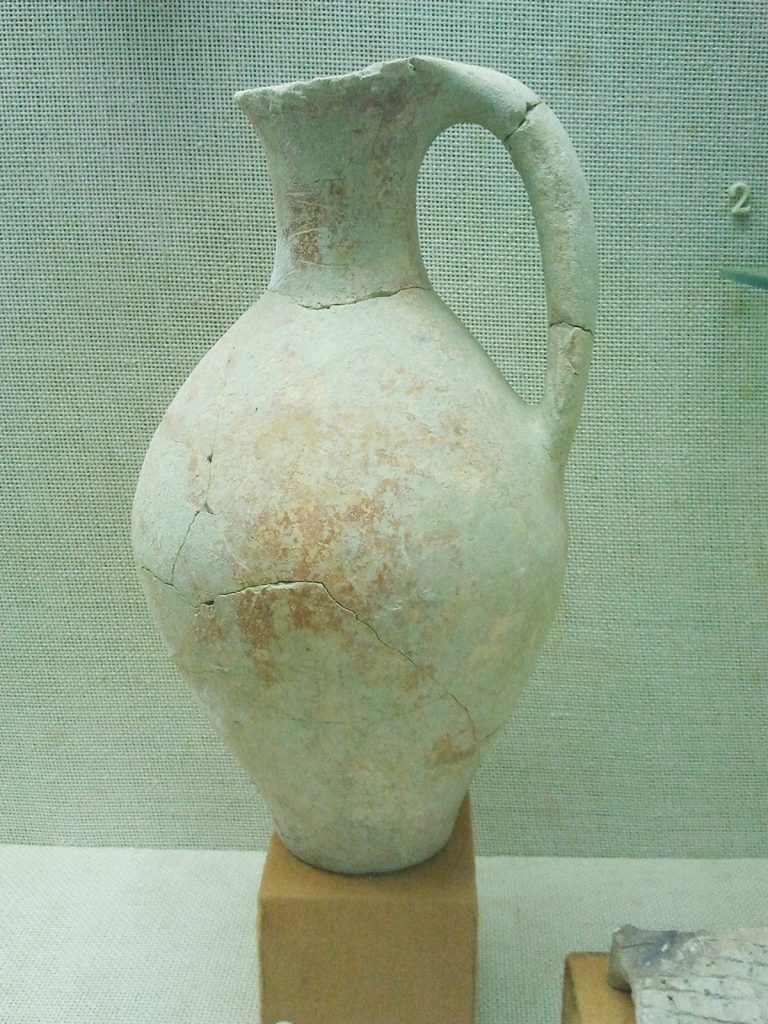So Abydos pottery ware is a unique pottery group from the beginning of the 3rd millennium BC. Now the group mainly includes jugs; juglets and jars. Artifacts from these vessels were found on sites in Canaan in Early Bronze Age II and III. Also, they were found in archaeological strata in Egypt in sites dated to the First Dynasty. Moreover finds from these types of pottery were also found on Syrian sites. The name of the pottery ware is taken from the archaeological site Abidus; where they were first found in Upper Egypt. The tools serve as a way to relatively date an archaeological site for this period on the archaeological sites in Canaan. The family of tools does not exist at another time; and finding it at an archaeological site is an indication of the strata belonging to this family’s tools.

Credit: Hanay, CC BY-SA 3.0, via Wikimedia Commons
Abydos Ware: The Tomb of King Djer
The vessels were first discovered in the tombs of kings and ministers of the first dynasty. The excavators at the site already recognized during the excavations that the pottery ware was not from Egypt. The ruling class used these artifacts in Egypt, which were placed inside the rulers’ tombs to be used after death. The “Abydos” ware began to appear in ceramic assemblages during the reign of the Egyptian Pharaoh Djer; the third king of the first dynasty (2900/2950 BC).
The researchers’ hypothesis about the country of origin of the tools is that they were manufactured in Canaan. Chemical tests of the tin composition from which the pottery found in Egypt and Canaan were produced indicate almost complete identity. Also, tools from this family were found in various parts of Canaan. For example, Tel Arad is an important site for this family of tools. These tools were completely absent from Stratum IV (Early Bronze Age A) in Arad; which is the first stratum to establish the city; while Stratum III, which belongs to Early Bronze Age II, the period when Arad became a city, found many tools of this family. In addition, the tools were found in Tel Lachish; Tel Gezer; Tel Al-Far’a (North), Tel Megiddo; Beth Yerah; Tel Beit Shean, and Tel Jericho.

